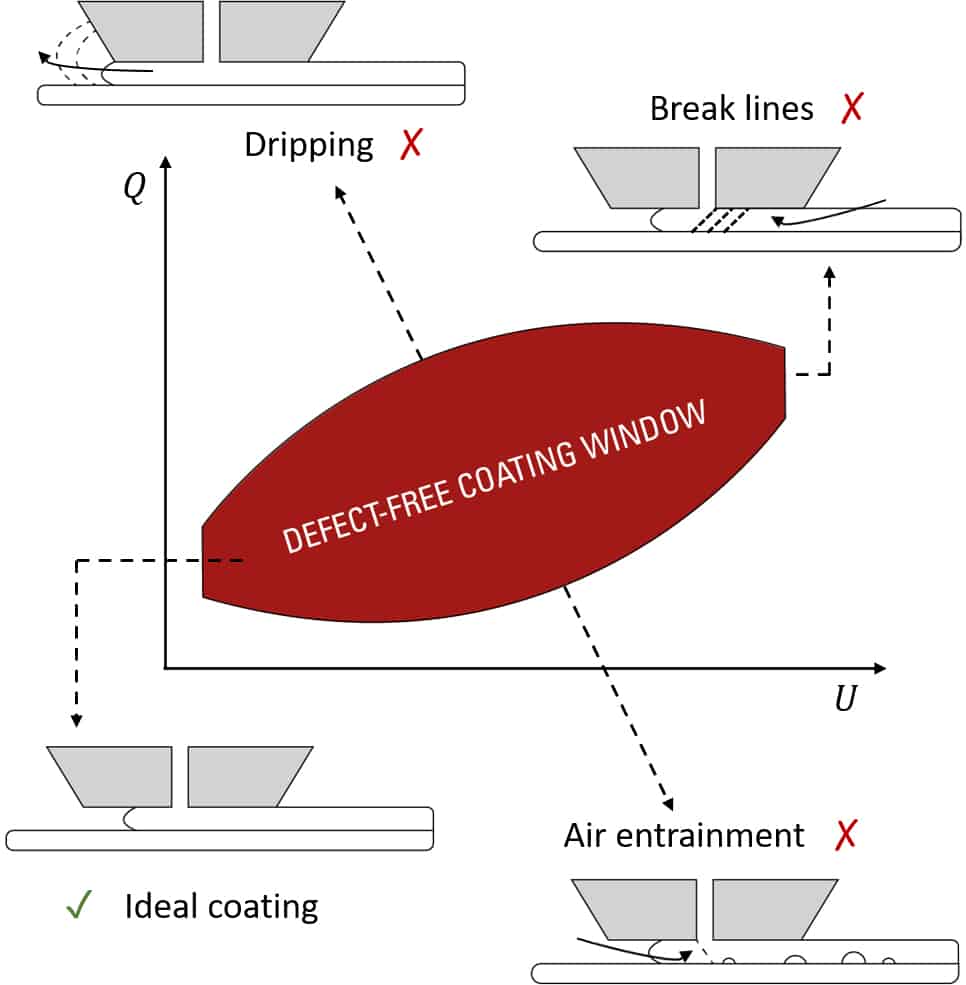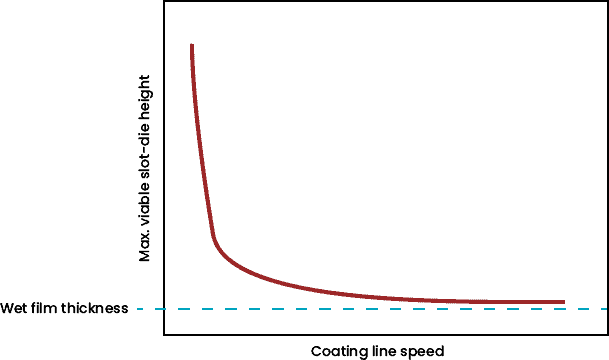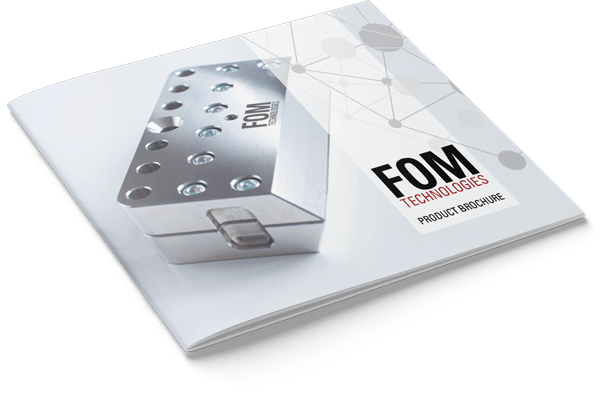SLOT-DIE HEIGHT AND LINE SPEED
SLOT-DIE HEIGHT AND LINE SPEED
Decoding the slot-die coating process
At FOM Technologies, we regularly encounter clients and operators who are new to slot-die coating. They have often heard about the precision, flexibility, and scaling benefits that slot-die technology can provide, but are unclear on the finer details of how the slot-die coating process differs from similar technologies such as blade coating or tape casting.
Does slot-die height determine wet film thickness? Does fluid viscosity impact the stability of my coating process? When does shim thickness become a relevant parameter? These are all reasonable questions and understandable points of ambiguity for new researchers and operators entering the in-depth field of slot-die based process development for the first time.
In the interest of boosting the accessibility of our technology, we’re launching our technical blog content with a series of articles dedicated to answering these questions and discussing our most frequently observed points of confusion for new users.
First up: what is the relationship between slot-die height and line speed?
Stabilizing the coating bead
To answer this question, we first need to remember that slot-die coating is a pre-metered coating process, where coating occurs via fluid transfer from the slot-die to substrate through a liquid bridge known as the coating bead.
For a slot-die coating process to achieve uniform, defect-free coatings, this fluid transfer through the coating bead must reach a stable steady-state in which its upstream (from the slot-die) and downstream (to the substrate) pressures are at equilibrium. When these coating bead pressures are balanced, fluid is guided easily onto the substrate in an infinitely repeatable coating process. When these pressures deviate from equilibrium, common defects such as dripping or spreading, meniscus breaks, and air entrainment will occur.
If the pressure inside the coating bead increases beyond a critical point, the coating bead will expand, resulting in spreading or dripping of coating fluid beyond the intended coating area.
If the pressure inside the coating bead similarly decreases below a critical point, the coating bead will begin to shrink, entrain air bubbles, or break up altogether due to lack of upstream pressure.
Relevant process parameters
The two most intuitive ways of influencing pressure in the coating bead are by adjusting the pump volumetric flow rate (Q) and the substrate line speed (U). Increasing the pump rate forces more fluid into the coating bead per unit time, thereby increasing the pressure inside the coating bead. Increasing the substrate line speed removes more fluid from the coating bead per unit time, thereby decreasing the pressure inside the coating bead.
This means that increasing pump rate or decreasing line speed can improve the stability of the coating bead in instances where shrinking, air entrainment, or line break defects are being observed due to insufficient pressure in the bead. Similarly, decreasing the pump rate or increasing the line speed can stabilize the coating bead in instances where spreading or dripping defects are observed.
However, these intuitive solutions alone are imperfect. Due to the pre-metered nature of the slot-die coating process, adjust the pump rate or line speed has the knock-on effect of impacting film thickness as well. In a process where thickness control is often of utmost importance, adjusting thickness to affect process stability and film uniformity is not ideal.
Thankfully, there is a third, less obvious mechanism for influencing coating bead pressure as well: slot-die height (H0)! By raising the height of the slot-die, the coating bead volume is stretched over a larger distance, thereby decreasing the internal pressure. Lowering the slot-die closer to the substrate similarly increases the internal pressure. Armed with this knowledge, operators can use the slot-die height (sometimes also referred to as the coating gap) as a powerful optimization parameter to achieve stable coating processes at a wide variety of pump rates, line speeds, and film thicknesses.

Pressure in the coating bead can be directly influenced by adjusting the fluid pump rate and coating line speed.
Increasing line speed for a constant layer thickness

For a fixed wet film thickness, the maximum viable slot-die height decreases significantly with increasing coating line speed. This relationship is primarily true for proximity coating at moderate line speeds. At very high line speeds it is preferable to transition to curtain coating, where the slot-die is held much higher above the substrate.
But does anything change when trying to transition a previously optimized coating process to a different (typically higher) line speed?
Indeed, it does. Even for a fixed film thickness, where the pump rate and line speed are scaled together to maintain the desired pressure balance and coating weight, coating bead pressure tends to decrease with increasing line speeds. Slot-die height is therefore an even more critical parameter to consider when adjusting process speeds, as the slot-die height must typically be brought closer to the surface of the substrate to stabilize the coating bead as the line speed increases.
For more information on this and similar topics, we recommend the excellent works of Harris and Carvalho.
Read more on the topic
Download the FOM Technologies Product brochure
Fill in your information and click download to access the pdf.




